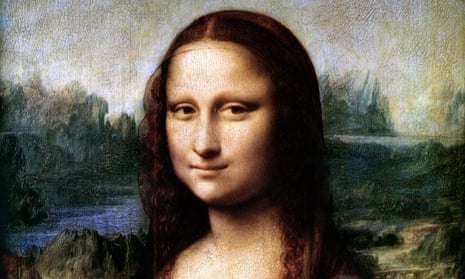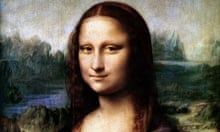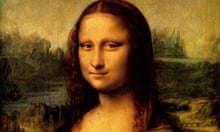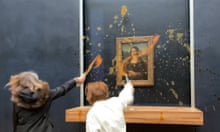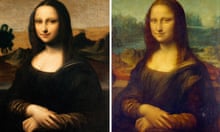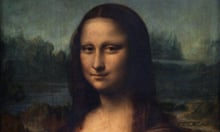What is the Mona Lisa’s secret? She smiles so enigmatically under the all-but-invisible transparent silk veil that covers her hair, turning her brown eyes as if she has just seen someone come into her field of vision. The fascination and fame of this portrait, begun by Leonardo da Vinci in 1503, has always related to the elusive personality it communicates. Giorgio Vasari in the 16th century claimed Leonardo employed musicians and jesters to make Lisa smile. Walter Pater in the Victorian age thought she resembled a “vampire”. Modern viewers sometimes see her face as androgynous, an observation first made by Marcel Duchamp.
I have a new theory. Perhaps the Mona Lisa had syphilis.
This painting may seem like a dream image, an unreal vision, but it is a portrait of someone real. Lisa Gherardini was the wife of a Florentine merchant called Francesco del Giocondo. Contemporary sources, including a note made in 1503 by an employee in the Florentine government at the Palazzo Vecchio, put it beyond reasonable doubt that she was Leonardo’s model (and not, as art historians used to claim, someone posher).
So, she was the wife of a merchant who lived in Florence in the age of Machiavelli, Michelangelo and the explorer Vespucci. Can we know anything else about her? The lives of women in Renaissance Italy are lost in the shadows. Only in Leonardo’s portraits and a handful of other works of art do Florentine women of this period come back to life.
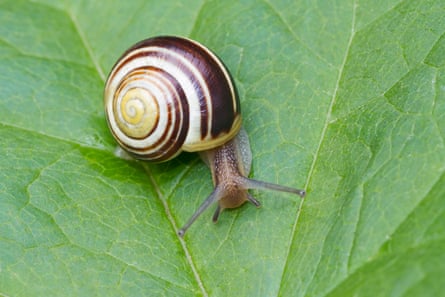
Yet, as it happens, a handful of documents have survived that give glimpses of Del Giocondo’s life. For instance, she is recorded in the ledger of a Florentine convent as buying snail water (acqua di chiocciole) from its apothecary.
Snail water? I remember finding it comical when I first read this. Beyond that, I accepted a bland suggestion that it was used as a cosmetic or for indigestion. In fact, this is nonsense. The main use of snail water in pre-modern medicine was, I have recently discovered, to combat sexually transmitted diseases, including syphilis.
Perhaps it was the disgusting, punitive nature of this concoction that made it seem a pungent cure. Snail water was still being used in the 18th century; books from the time are very specific about its medicinal value. The Pharmacopœia pauperum (1718) gives this recipe:
Take Garden-Snails cleansed and bruised 6 Gallons, Earth-Worms washed and bruised 3 Gallons, of common Wormwood, Ground-Ivy, and Carduus, each one Pound and half ...
More herbs are added to give the vile brew, credited to Dr Richard Mead, a physician at St Thomas’s hospital in London, a better flavour. Other 18th-century recipes concur in the use of snail water for treating such ailments,as you can see for yourself at the excellent Old Operating Theatre Museum and Herb Garret, where examples of the recipe and its use for venereal disease are on display.
Is this why Del Giocondo needed snail water? If so, it is possible she wanted it for someone other than herself. In any case, her recorded purchase was more than a decade after she posed for Leonardo. But suppose she already had a sexually transmitted disease in 1503. What would that say about Leonardo’s most famous painting?
When Del Giocondo posed for Leonardo in 1503, syphilis was shaking Europe to its core. Some said this new disease had been brought from the new world by Columbus’s sailors in 1492. It spread like wildfire. Could there be hint of it in Leonardo’s most famous painting? The Mona Lisa is shown in front of a hilly landscape through which a road snakes towards distant water and mountains. Perhaps the far-off mountains across wide, blue water represent the new world – the source of the Mona Lisa’s secret.
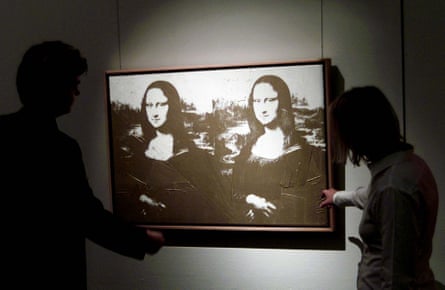
When Pater compared the Mona Lisa with a vampire, he was hinting at something macabre and morbid in Leonardo’s masterpiece: an association of sex and death. Perhaps this was not simply Pater’s overheated Victorian imagination conjuring decadence, for there are real shadows of mortality in this painting. When Andy Warhol created a black and white version of the Mona Lisa in 1963, he brought out just how much blackness underlies and undercuts the golds and browns in Leonardo’s intricate portrait. Pools of dark shadow spread across del Giocondo’s face, lending definition to her beauty, but also hinting at a melancholy behind her half-smile. The shadows around her eyes could easily seem unhealthy. The strange greenish light that bathes her could be a miasma of sickness.
If the Mona Lisa is a portrait of someone with a sexually transmitted disease, these hints of death and illness suddenly make sense. As for her half-smile, it becomes a wry acknowledgement that sex can make you sick. This macabre message fits well with Sigmund Freud’s analysis of Leonardo. Freud argued in his 1910 book Leonardo da Vinci and a Memory of His Childhood that the polymath researcher who not only painted but also filled notebooks with his scientific studies was repelled by sex. Leonardo was homosexual, he says, but afraid of intercourse with men or women. Instead, he “sublimated” sexuality into research.
Freud would surely think it interesting that the model of the Mona Lisa may have had syphilis. Of course, he made a lot of mistakes in his book about Leonardo. This is probably a red herring, too. However, there is surely something unhealthy about the obsessive allure that draws so many people to admire this beauty behind her screen of glass. Whatever the true meaning of the Mona Lisa, it is a slightly decadent masterpiece. Fin de siècle fantasies of syphilis-spreading vampires don’t seem so wide of the mark.
